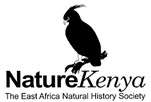A Guide to a Safari in Masai Mara: 10 Compelling Reasons Why Masai Mara is a Must Visit in Kenya, Africa
Unveiling the Wonders of the Africa’s Leading Park (WTA Awards 2013-2018)
Table of Contents
Safari Section 1: Introduction: Masai Mara's Untamed Beauty and the Thrill of an Affordable Safari
Safari Section 2: The 10 Compelling Reasons to Visit Masai Mara on Safari Once in a Lifetime
Safari Section 3: The Art of Budget Planning for a Masai Mara Safari: Making the Most of Your Money
Safari Section 4: Accommodation Options: Freedom of Choice for Every Traveler On Safari to Masai Mara
Safari Section 5: Exploring Cost-Effective Safari Choices & Packages: Masai Mara Safari Activities
Safari Section 6: Beyond a Masai Mara Safari: Exploring Kenya's Cultural and Coastal Gems
Safari Section 7: Conclusion: Embrace the Adventure and Discover the True Essence of Value-Based Masai Mara Safari
Safari Section 1: Introduction: Masai Mara's Untamed Beauty and the Thrill of an Affordable Safari
The Masai Mara National Reserve is one of the most famous wildlife reserves in the world, located in southwestern Kenya. It is renowned for its stunning landscapes, rich biodiversity, and the Great Migration. In this article, we will explore several aspects that make Masai Mara a must-visit destination and also include key aspects to consider for a value-based Masai Mara Safari.
The mighty Masai Mara remains one of Kenya's best loved game reserve. 1,510 sq. kms/ 583 sq. miles of wide savannah, rolling hills and riverine forest with huge grazing herds, bountiful birdlife and Africa's largest mammal population and species after the Democratic Republic of Congo (according to The Mammal Diversity Database of the American Society of Mammalogists (ASM)). Kenya lion population is estimated recently to be over 2,500, the 4th largest in Africa and about 6.8% of in the entire world
What makes Masai Mara special in terms of command of wildlife experiences is the Wildlife density (Park Size divided by Population for 100Sq Km.) This simply tells how easily, quickly and frequency of spotting them.
The table below gives an example of lion distribution, population and density in Kenya's major parks - Ranked by Density
| Park | No. of Lions | Park Size | Approx. Density |
| Masai Mara National Reserve | 1,000 lions | 1,510 km² | 66.2 lions/100 km² |
| Nairobi National Park | 50 lions | 117 km² | 42.7 lions/100 km² |
| Samburu, Buffalo Springs & Shaba National Reserves | 180 lions | 549Km2 | 30.5lions/100Km2 |
| Amboseli National Park | 100 lions | 392 km² | 25.5 lions/100 km² |
| Tsavo West National Park | 200 lions | 9,065 km² | 2.2 lions/100 km² |
| Tsavo East National Park | 250 lions | 13,747 km² | 1.8 lions/100 km² |
Masai Mara leads with approximately 66 lions per square kilometer as compared to the expansive and highly reputed Kruger National Park in South Africa (19,485 sq km / 7,523 sq miles) - About 2.5 lions per 100 sq km even if the lion population is close to 2,000. Certainly a better and intimate experience of sighting and exploring Masai Mara for one the big cats than anywhere else.
It is worth mentioning that Tanzania has the world's and Africa's largest population of lions estimated between 15,000-16,000. However, the distribution and density over a large acreage is only 1.5-1.6 lions per 100sq km. South Africa is second in Africa and the world with 3,500, but with the world's highest density at 3.0 followed certainly by Kenya (and its iconic Masai Mara) with 2,500 with an index of 1.2. So Where would you choose for a Top Wild Cats Safari: King Lion Enthusiasts? Masai Mara, certainly! It exceeds Kruger's density and distribution parameters.
Compare a Lion Safari Experience in major Tanzania Parks below:
Park | No. of Lions | Park Size | Approx. Density |
Lake Manyara National Park | 100 lions | 330 km² | 30.3 lions/100 km² |
Ngorongoro Crater | 60 lions | 265 km² | 22.6 lions/100 km² |
Serengeti National Park | 3,000 lions | 14,763 km² | 20.3 lions/100 km² |
Ruaha National Park | 286 lions | 10,300 km² | 2.8 lions/100 km² |
Tarangire National Park | 300 lions | 2,850 km² | 10.5 lions/100 km² |
Each year the Mara is the staging ground for the Great Migration, one of the most awe-inspiring natural events in the world.
The Greater Mara complements Masai Mara National Reserve and it is usually considered a part of it in computing Masai Mara acreage. The Greater Mara is most reputed for success in sustainable tourism practices through environmental and wildlife conservation benchmarks, exclusive wildlife exploration and superior accommodation.
In order of their sizes and acreage, they are Mara North, Pardamat Conservation Area, Oloisukut, Mara Naboisho, Olare Motorogi, Mara Siana, Mara Ripoi, Ol Kinyei, Mara Lemek, Ol Choro Oirouwa, Maasai Moran, Nashulai Maasai, Mbokishi Mara, Mount Suswa, Olderkesi, Isaaten, Orpua, Nyekweri Oloirien, Olerai, Enonkishu, Nyekweri Kimintet and Enarau Conservancies.
A holiday in Kenya without a safari to Masai Mara is missing the best of Africa whether travelling as couple, family, group or business vacation.
Safari Section 2: The 10 Compelling Reasons to Visit Masai Mara on Safari Once in a Lifetime
1. Attestation to WTA Awards for 6 years consecutively as Africa's Leading Park (2013-2018)
A safari to Masai Mara promises visitors top quality all year-round viewing of abundant resident wildlife which is greatly supplemented by the incoming migration herds and migrant predators pouring into Masai Mara from June to October. The changing rainfall patterns may keep the migration animals in Masai Mara from July to November.
In addition, the growth and steady management of the Greater Mara Conservancies by Masai Mara Wildlife Conservancies Association has greatly lifted the quality and diversity of activities offered in a Safari to Masai Mara. These Conservancies bordering Masai Mara offer safari enthusiasts with a private, intimate and exclusive immersion into high quality game viewing because of the restricted number of camps with rights to use the Conservancy areas, ensuring a non-crowded experience, off-road driving, night game drives, and guided walking at many camps.
Home to the "Big Five" (lion, leopard, elephant, buffalo, and rhinoceros). A safari to Masai Mara guarantees ample viewing of the Big Cats. The sensational BBC World Cat Diary also known as Big Cat Week or Big Cat Live, is a long-running nature documentary series on BBC television which followed the lives of African big cats in Kenya's Maasai Mara. The first series, broadcast on BBC One in 1996, was developed and jointly produced by Keith Scholey, who would go on to become Head of the BBC's Natural History Unit.[1] Eight series have followed, most recently Big Cat Live, a live broadcast from the Mara in 2008. The original presenters, Jonathan Scott and Simon King, were joined by Saba Douglas-Hamilton from 2002 onwards. Kate Silverton and Jackson Looseyia were added to the presenting team for Big Cat Live - Wikipedia.

Andrew Karanja of Topcats Safaris was highly complimented for being one of the professional safari guides who made this a success.
2. Great Migration: Witness the annual migration of wildebeest and zebras from July to October.
Wildebeest typically inhabit the Serengeti plains in Tanzania, East Africa. The migrate to neighbouring Masai Mara National Reserve normally from June to end of September and rain patterns can push this period from July to October. For most of their lives, wildebeest graze, breed and survive in the grassy savannas and open woodlands of the plains, which straddle Masai Mara National Reserve in Kenya & Serengeti National Park in Tanzania
Guided by natural instincts to thrive and survive they trek 800 to 1100 km in dispersal patterns grouping to cross the fearsome river vales of death crossing the Grumeti River, Western Serengeti in May to enter Masai Mara National Reserve in June/July for another world famous dramatic crossing of Mara River in Masai Mara. It is important to state that rainfall patterns across these two legendary parks of Africa do largely affect movement, migrations patterns and timings.
Although they migrate in groups with natural leaders, more than 1.5 million wildebeest, zebras and antelopes migrate in an enormous loop every year. The annual migration northwest, at the end of the rainy season (usually in May or June) is recognized as one of the "Seven Wonders of the Natural World." This search for greener pastures does not come without danger. Its migration route crosses many rivers, most filled with giant Nile crocodiles, predatory hyenas, wild dogs, and the larger cats. They may also be accompanied by a small number of migrant predators.
3. Natural Beauty, Brilliant Sunsets & Diverse Ecosystems: Experience a variety of habitats, including dramatic views of savannahs, woodlands, and riverine areas.
Masai Mara boasts of vast and rolling savannah plains dotted with acacia trees. The escarpment and other hills provide panoramic views of the surrounding landscapes. The iconic Mara River, winding across the parks of Masai Mara into Northern Serengeti offers the BEST experience in dramatic crossings during the Great Migration beating Grumeti River Crossings in Serengeti by far. The river takes a serpentine route through the Masai Mara into Northern Serengeti, creating a maze of channels and banks. Its winding nature enhances the visual appeal, especially when viewed from elevated points like the Oloololo Escarpment. The Mara River stretches approximately 395 kilometers (around 246 miles). Its width does vary, with some sections being quite narrow while others are broader, creating diverse habitats along its banks.
The experience of 'skies over Mara' in a hot air balloon expedition, light aircraft or helicopter offers an unparalled sight of the natural beauty of Masai Mara and especially the Mara River. Flanked by lush riverine forests that support a variety of wildlife, including monkeys, birds, and insects. Predator-prey dynamics near the banks of the Mara River is one of the most exciting experience for wildlife enthusiasts on a safari to Masai Mara, photographers, researchers and naturalists.
The golden hues of the grasslands, especially at sunset, create a picturesque backdrop. Serene riverbanks lined with lush vegetation, teeming with life. The incredible sunsets of Masai Mara are a breathtaking spectacle that enchants visitors and wildlife enthusiasts alike. Stunning visuals and vibrant colors of Savannah Africa's sunsets on a Masai Mara Safari are characterized by vivid hues of orange, pink, and purple, creating a dramatic sky that contrasts beautifully with the savannah landscape. As the sun descends, the colors intensify, casting a warm glow over the plains.
The wonderful silhouettes of dominant savannah flora and wildlife animals provide superior and colorful backdrops, multiplying the reasons to visit this park as compared to any other in Africa. A special dias and stage for photographers from all over the world, Masai Mara's photos are some of the most captivating of nature's wildlife, tropical flora in a unique interplay of light and shadows.
During sunset, many animals become more active, providing opportunities for exceptional wildlife watching as they prepare for the night. Predators like lions and leopards often emerge from their hiding spots, making it an exciting time for safari-goers. The tranquil atmosphere during sunset invites reflection and appreciation of nature's beauty, making it a cherished moment for sundowners with many lodges and camps offering viewing spots and a dalliance with nature's close of day-light.
4. Cultural Experiences: Engage with the Maasai community and learn about their traditions and lifestyle.
Masai Mara is home to legendary Maasai people. Experiencing the rich culture of the Maasai people in the Masai Mara region is an unforgettable journey that deepens one’s connection to nature's gift to Africa. A visit to a Maasai Cultural and Traditional Village while on a safari to Masai Mara is highly recommended and another important of the 10 compelling reasons to visit the park as a once in a lifetime must do adventure in Africa. This visit normally takes an hour.
See and take memorable photos of Maasai bomas (unique dung-mud-and-thatch homesteads), domestic animals and the people of an interesting community. This chance is to have one-on-one interaction with local families and delve more into the insights of their their daily lives, customs, traditions, nature's talents / giftings, and their social structures.
Did you know that Maasai guides are some of the world's best trackers, naturalists who can lead you into a very exciting bush walking and exploration tours? That they also are one of the most fearless folks to walk on earth? Other activities with the Maasai include Maasai warrior training (animal tracking, throwing clubs and spears, lighting fires without matches, in addition to special butcher knowledge of animal meat anatomy and cattle herding). A family safari to Masai Mara with children is a guarantee of their enjoyment and appreciation of wild Africa.
The Maasai leaping dance and cultural performances are often enchanting. Guests to the villages and also at lodges and camps are often treated to vibrant traditional dances and songs, showcasing the Maasai’s rich oral traditions. The unique dances are characterized by energetic jumps, rhythmic chanting, and colorful attire, reflecting their cultural pride. Why not dance with the Maasai on a safari to Masai Mara? This can be a really special moment to have close fun, foster interaction, connection and appreciation of the Maasai way of life.
Maasai people have a high handicraft IQ. They are globally known for their intricate beadwork and crafts. Visitors can purchase handmade jewelry, clothing, and artifacts directly from their artisans or at souvenir shops in lodges / camps. Why not get an opportunity to learn about the symbolism behind the various designs and colors that add depth to eco-shopping experience?
A visit to a Maasai Cultural Village is a great opportunity to support this community. The small fee paid on entry is an investment to sustainabl e tourism or participation in community-based tourism initiatives that directly fund and benefit the Maasai people. Some of this include volunteering, supporting local education, social welfare, healthcare, and development projects
5. A Plethora of Exciting Safari & Adventure Activities:
In summary, visitors to the Masai Mara can indulge in a plethora of activities that encompass adventure, wildlife, culture, and relaxation, making it a truly unforgettable destination. As one of the best Kenya's destination for exciting game drives, to be on a safari in Masai Mara is embrace a promise of an authentic tropical Africa holiday.
- Explore the vast savannahs in a 4x4 vehicle day game drive to spot the "Big Five": lion, leopard, elephant, buffalo, the rhino and a plethora of various large and small mammals, avian life and unique flora. Night game drives are allowed in the Greater Mara conservancies if a guests chooses to reside their while on a safari to Masai Mara. This is a thrilling experience spotting nocturnal wildlife and activity under the stars with specialized guides.
- Masai Mara is great for guided walking trips. With gifted naturalists, armed rangers, Maasai warriors, visitors (and children alike) have a exceptional opportunity to have a close encounter with nature, the landscapes of Masai Mara, flora and fauna.
- Bird Watching expeditions is another special activity on a safari to Masai Mara. Home to over 500 species of birds, making it a paradise for bird watchers and photographers. Masai Mara is highly photogenic. Capture stunning images of both wildlife and landscapes with the backdrop of the Mara’s beauty.
- As mentioned above, the cultural experiences through visit to Maasai Cultural & Traditional Villages is a must do while on safari to Masai Mara
- Hot Air Balloon Rides: Experience breathtaking views of the Mara from above during a serene balloon ride at sunrise.
- Horseback Safaris: Explore the landscape on horseback, offering a unique and intimate way to see wildlife.
- Picnics in the Wild: Enjoy a meal (breakfast, lunch, sundowner, dinner, special barbeque) surrounded by nature, often set up in scenic locations
- Photography and Film Making Tours: Join guided tours focused on capturing the perfect shot of the Mara’s landscapes and wildlife.
Conservation and Education - Visit Conservation Projects: Learn about local conservation efforts, including community programs aimed at protecting wildlife.
- Research & Educational Talks: Attend presentations by wildlife experts and conservationists to deepen your understanding of the ecosystem.
Relaxation and Wellness - Spa and Wellness Treatments: Some lodges offer spa services, allowing guests to unwind with massages and wellness treatments in serene settings.
- Stargazing: At night, the clear skies of the Mara provide incredible opportunities for stargazing, often with guided sessions. Camps like Basecamp Wilderness is a good example
- Special Events (The Best Wildebeest Migration River Crossing Viewing): Witness the annual migration of wildebeests and zebras, one of the most spectacular wildlife events on the planet (typically from July to October).
6. Masai Mara as an Important Bird Area (IBA) and Prime Birding Destination
The Masai Mara is home to more than 500 bird species, including some Endemic Species. Birding enthusiasts can expect to find countless migratory species from Europe and Asia. The scenic environments and diverse ecosystems provide ideal conditions for sighting various bird species. Open savannahs, woodlands, kopjes, riverine forests and habitats
7. Sustainable Tourism Success in the Greater Mara Conservancies
MMWCA promotes sustainable and responsible tourism:
1. Community-owned and managed conservancies:
MMWCA is a community-based organization that empowers local Maasai communities to manage their own conservancies, ensuring that tourism revenue benefits the local people.
2. Conservation efforts:
MMWCA works with local communities to conserve wildlife and their habitats through initiatives such as anti-poaching patrols, habitat restoration, and human-wildlife conflict mitigation.
3. Sustainable tourism practices: MMWCA promotes sustainable tourism practices among its member conservancies, encouraging responsible wildlife viewing, minimal disturbance of wildlife habitats, and minimal impact on local communities.
4. Community-based tourism projects:
MMWCA supports community-based tourism projects that benefit local communities, such as homestays, cultural tours, and community-led conservation initiatives.
5. Certification and accreditation:
MMWCA has obtained certifications from reputable organizations such as the International Ecotourism Society (TIES) and the Kenya Ecotourism Network (KENET), ensuring that its member conservancies adhere to sustainable tourism practices.
6. Tourist management:
MMWCA has established a tourist management plan to regulate the number of tourists entering the conservancy areas, ensuring that wildlife habitats are not overburdened and local communities are not disrupted.
7. Community engagement and education:
MMWCA engages with local communities to educate them about conservation values, wildlife conservation, and the importance of responsible tourism practices.
8. Research and monitoring:
MMWCA collaborates with researchers and conservation organizations to monitor wildlife populations, habitat health, and human-wildlife conflict, informing conservation efforts and informing responsible tourism practices.
9. Partnerships and collaborations:
MMWCA partners with local businesses, NGOs, and government agencies to leverage resources, expertise, and funding for conservation and sustainable tourism initiatives.
10. Capacity building:
MMWCA provides training and capacity-building programs for local communities to develop their skills in conservation, tourism management, and community-based tourism initiatives.
By promoting these practices, MMWCA helps to ensure that tourism benefits both the local Maasai communities and the wider ecosystem, while also supporting conservation efforts to protect the Maasai Mara's unique biodiversity.
Other Key Players:
The Kenya Wildlife Service (KWS): Works to conserve wildlife and their habitats through anti-poaching efforts, research, and community engagement.
Ecotourism Society of Kenya: Fosters sustainable tourism development that conserves Kenya's natural environment while improving the livelihoods of local communities.It champions responsible tourims, links tourism, conservation efforts with communities and lodge establishmnents and creates an enabling enviroment for awareness, networking and collaboration.
Nature Kenya: Champions for profiling biodiversity, promotion of Eco-Tourism, bird tourism in lesser visited ares thus helping to distribute tourism more evenly across the country and reduces pressure on popular destinations. Other key mandates include promotion of conservation effort, community engagement, awareness and education and collaboration with industry stakeholders
The Maasai Wilderness Conservation Trust (MWCT): Supports conservation efforts in the Maasai Mara region through community-based initiatives and research projects.
The African Wildlife Foundation (AWF): Works to conserve wildlife and ecosystems through community-based conservation programs.
The Kenya Tourism Board (KTB): Promotes sustainable tourism practices through guidelines and initiatives for tour operators and tourists alike.
8. Accessibility: Well-connected by road and air, making it easy to reach from Nairobi.
9. Freedom to Choose Accommodation by Budget
10. Suitable for Special Theme Safaris: Honeymoons, Couples, Family Groups, Child-Friendly & Large Groups
Safari Section 2: Budget Planning for a Masai Mara Safari
- Accommodation: Options range from budget camps (around $50-100 per night) to luxury lodges (upwards of $300 per night).
- Transport: Consider costs for flights to the reserve or road transport from Nairobi (approximately $200-300 round trip).
- Park Fees: Daily entry fee for non-residents is approximately $80 per adult.
- Safari Packages: Look for all-inclusive packages that cover meals, activities, and transfers for better value.
- Extras: Budget for additional costs like tips, souvenirs, and optional activities.
Safari Section 3: Safari Package Choices
- Group Safari Packages: Cost-effective options starting from $150-250 per person per day.
- Private Safaris: More personalized experiences, typically ranging from $300-600 per day.
- Luxury Safaris: High-end packages offering premium accommodations and unique experiences, starting from $800 per day.
- Camping Safaris: Combine adventure and comfort, usually around $100-300 per person per day.
Safari Section 4: Safari Activities in Masai Mara
- Game Drives: Morning and evening drives to spot wildlife.
- Hot Air Balloon Rides: Experience breathtaking views of the reserve at sunrise.
- Walking Safaris: Guided walks through the reserve for a closer look at flora and fauna.
- Cultural Visits: Tours to Maasai villages to learn about their culture and traditions.
- Birdwatching: Guided birding tours to identify various species.
Safari Section 5: Best Time to Visit Masai Mara
- July to October: Ideal for witnessing the Great Migration.
- January to February: Great for calving season, with many young animals present.
- March to June: Good for fewer crowds and lush landscapes.
- November to December: Short rains can make the park lush and green, with fewer tourists.
Safari Section 6: What to Pack for a Masai Mara Safari
- Clothing: Lightweight, breathable fabrics; neutral colors preferred.
- Footwear: Comfortable walking shoes and sandals.
- Accessories: Sunglasses, hats, and sunscreen for sun protection.
- Binoculars: Essential for wildlife viewing.
- Camera: To capture the stunning wildlife and landscapes.
- Insect Repellent: Particularly important during the wet season.
7. Unique Flora and Fauna of Masai Mara
- Flora:
- Acacia Trees: Iconic to the savannah landscape.
- Wildflowers: Various species bloom during the rainy season.
- Fauna:
- Endangered Species: Such as the black rhinoceros.
- Unique Species: Like the Maasai giraffe and the African wild dog.
8. Landscapes of Masai Mara
- Savannah Grasslands: Expansive open spaces ideal for grazing wildlife.
- Riverine Forests: Lush areas along the Mara and Talek rivers.
- Rocky Outcrops: Scenic locations for viewing wildlife and landscapes.
- Rolling Hills: Offering panoramic views of the reserve.
9. Brief History of Masai Mara
- Establishment: The reserve was established in 1961 as a conservation area.
- Maasai People: Inhabitants of the region known for their rich cultural heritage.
- Wildlife Conservation Efforts: Ongoing initiatives to protect wildlife and promote sustainable tourism.
Conclusion
Visiting the Masai Mara National Reserve is a once-in-a-lifetime experience filled with adventure, culture, and breathtaking beauty. Whether you're an avid wildlife enthusiast or simply looking for a unique travel experience, Masai Mara offers something for everyone. Prepare for an unforgettable journey into the heart of Kenya's wilderness!







